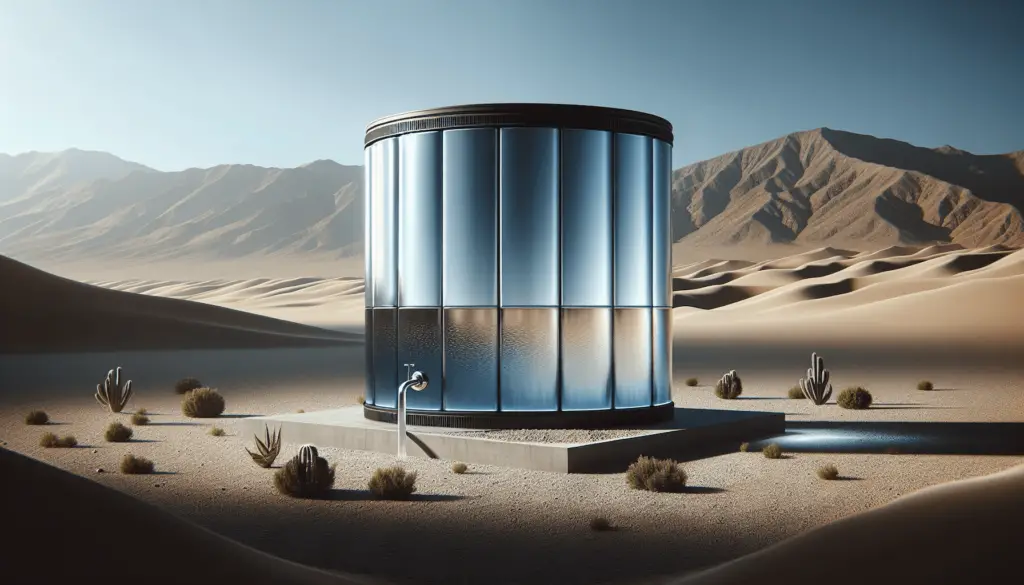Rainwater Harvesting: Innovative Systems for Dry Climates
Are you looking for sustainable ways to conserve water in arid regions? In this article, you will learn about innovative rainwater harvesting systems that can help you make the most of limited water resources in dry climates. From simple techniques to complex systems, there are various methods to collect and store rainwater for future use. Let’s explore some of the most effective strategies for rainwater harvesting in arid regions.

Understanding Rainwater Harvesting
Rainwater harvesting is the process of collecting and storing rainwater for later use. This ancient practice dates back thousands of years and has been used by civilizations around the world to cope with water scarcity. In dry climates where water sources are limited, rainwater harvesting can be a valuable strategy to supplement traditional water sources. By capturing rainwater, you can reduce your reliance on municipal water supplies and decrease your environmental impact.
Benefits of Rainwater Harvesting
There are several benefits to implementing a rainwater harvesting system in a dry climate. First and foremost, it allows you to capture a free and abundant resource that falls from the sky. By collecting rainwater, you can reduce your water bills and save money on irrigation costs. Rainwater is also free of chemicals typically found in tap water, making it a healthier option for watering plants and gardens. Additionally, rainwater harvesting can help reduce erosion and flooding by capturing water that would otherwise run off into storm drains.
Types of Rainwater Harvesting Systems
There are various types of rainwater harvesting systems that you can implement, depending on your needs and budget. Here are some of the most common systems used in dry climates:
1. Roof-Based Rainwater Harvesting
One of the simplest and most cost-effective methods of rainwater harvesting is collecting water from your roof. By installing gutters and downspouts, you can direct rainwater into storage tanks or barrels. This water can then be used for irrigation, washing cars, or flushing toilets. Roof-based rainwater harvesting is an excellent option for homeowners looking to reduce their water consumption and lower their utility bills.
2. Rain Gardens
Rain gardens are another effective way to harvest rainwater and prevent runoff in dry climates. These gardens are designed to capture and absorb rainwater, allowing it to seep into the soil and replenish groundwater sources. By planting native vegetation in a rain garden, you can create a beautiful and functional landscape that helps conserve water and support local wildlife. Rain gardens are a sustainable solution for managing stormwater and reducing erosion in arid regions.
3. Above-Ground Tanks
If you have limited space or want a larger storage capacity, above-ground tanks are a practical option for rainwater harvesting. These tanks come in various sizes and materials, such as plastic, fiberglass, or steel. Above-ground tanks can be placed in your yard or garden and connected to your downspouts to collect rainwater. They are an excellent choice for homeowners who want to store a significant amount of water for outdoor use, especially during dry spells.
4. Underground Cisterns
For those looking to maximize their water storage capacity and maintain a low profile, underground cisterns are an ideal solution. These large containers are installed below the ground and can hold a substantial amount of rainwater. Underground cisterns are discreet and do not take up valuable space in your yard or garden. They are a more permanent and secure option for storing rainwater, providing you with a reliable source of water during droughts or water restrictions.
Design Considerations for Rainwater Harvesting Systems
When planning a rainwater harvesting system for a dry climate, there are several design considerations to keep in mind. These factors will help you optimize the effectiveness and efficiency of your system:
1. Roof Size and Shape
The size and shape of your roof will impact the amount of rainwater you can collect. A larger roof will capture more water, while a sloped roof will facilitate the flow of rainwater into your collection system. Consider the pitch and material of your roof when designing a rainwater harvesting system to ensure maximum water capture.
2. Gutter and Downspout Placement
Proper placement of gutters and downspouts is essential for directing rainwater into your storage tanks or barrels. Make sure your gutters are clean and free of debris to prevent clogs and backups. Position downspouts strategically to transfer water efficiently from your roof to your storage containers.
3. Filtration and Treatment
It is crucial to filter and treat rainwater before using it for domestic purposes. Install a filtration system to remove debris, sediment, and contaminants from the collected water. Consider using UV sterilization or chlorine tablets to kill bacteria and pathogens in the water. By treating rainwater properly, you can ensure its safety and quality for various applications.
4. Overflow and Drainage
In dry climates with infrequent rain events, it is essential to design an overflow and drainage system for excess water. Install an overflow pipe or outlet to redirect surplus water away from your property to prevent flooding. Create swales or dry wells to manage excess runoff and allow rainwater to infiltrate into the ground slowly.

Maintenance of Rainwater Harvesting Systems
To ensure the long-term effectiveness of your rainwater harvesting system, regular maintenance is essential. Here are some tips for maintaining your system and maximizing its efficiency:
1. Inspect Gutters and Downspouts
Regularly check your gutters and downspouts for debris, leaves, and other obstructions that can inhibit the flow of rainwater. Clean your gutters at least twice a year to prevent clogs and backups. Trim overhanging branches and vegetation to minimize debris accumulation on your roof.
2. Monitor Water Quality
Periodically test the quality of the rainwater collected in your storage tanks to ensure it is safe for use. Check for foul odors, discoloration, or sediment in the water, which may indicate contamination. Use water testing kits or send samples to a lab for analysis to detect any pollutants or impurities.
3. Maintain Storage Tanks
Inspect your storage tanks regularly for leaks, cracks, or damage that may compromise their integrity. Clean the interior of the tanks annually to remove algae, bacteria, and slime buildup. Consider installing a tank cover to prevent debris, insects, and sunlight from contaminating the stored water.
4. Winterize Your System
In regions with freezing temperatures, it is essential to winterize your rainwater harvesting system to prevent damage. Drain your storage tanks and disconnect hoses before the first frost to avoid freezing and bursting. Insulate exposed pipes and valves to protect them from cold weather and ensure the system remains operational throughout the winter.
Conclusion
Rainwater harvesting is a sustainable and cost-effective solution for conserving water in dry climates. By implementing innovative systems and design considerations, you can capture and store rainwater for various purposes, from irrigation to household use. Whether you opt for roof-based collection or underground cisterns, there are numerous options available to help you make the most of limited water resources. Start harvesting rainwater today and take a step towards a more sustainable future for you and the environment.
